a house for the arts – idea competition
Finally, my prayers seem to have reached some sensible ears up in Heaven…!

An enlightened owner inherited a high grade and extremely well preserved house in Wakayama. The house is a 1,400㎡ (mostly 1 story, 2 rooms on the upper floor) timber frame house on a 3,100㎡ lot.
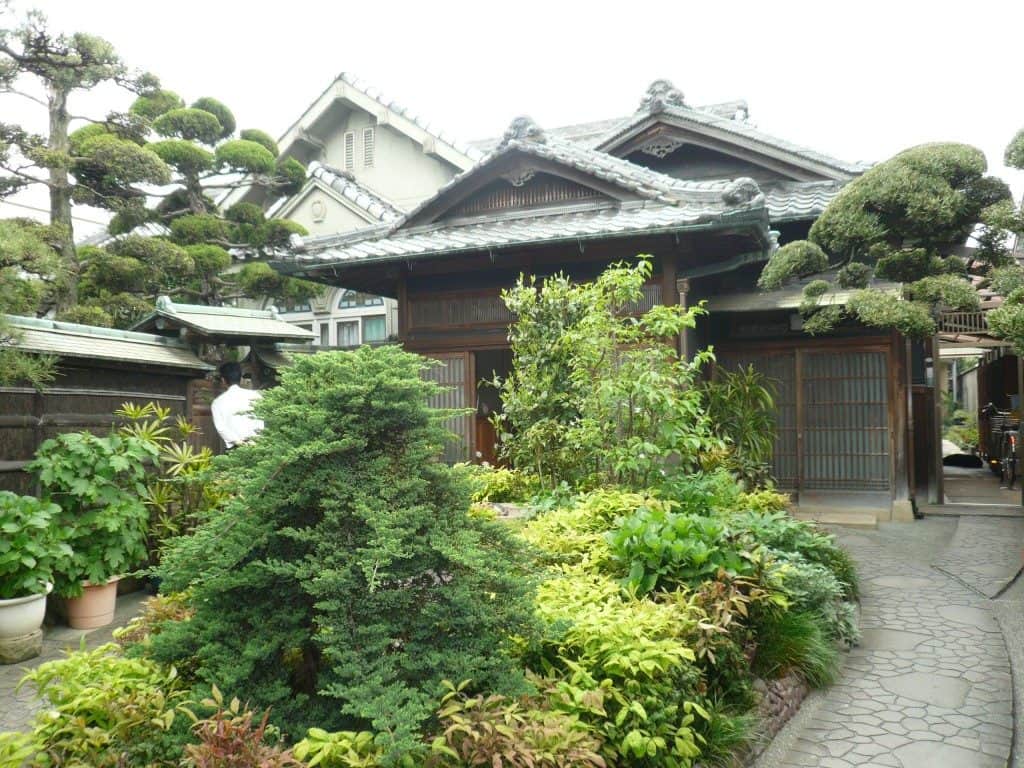
K-house is relatively new (1940) but being pre-war, it belongs to a sensibility, culture of material and aesthetic sense that unfortunately is now lost and unknown to post war architecture.
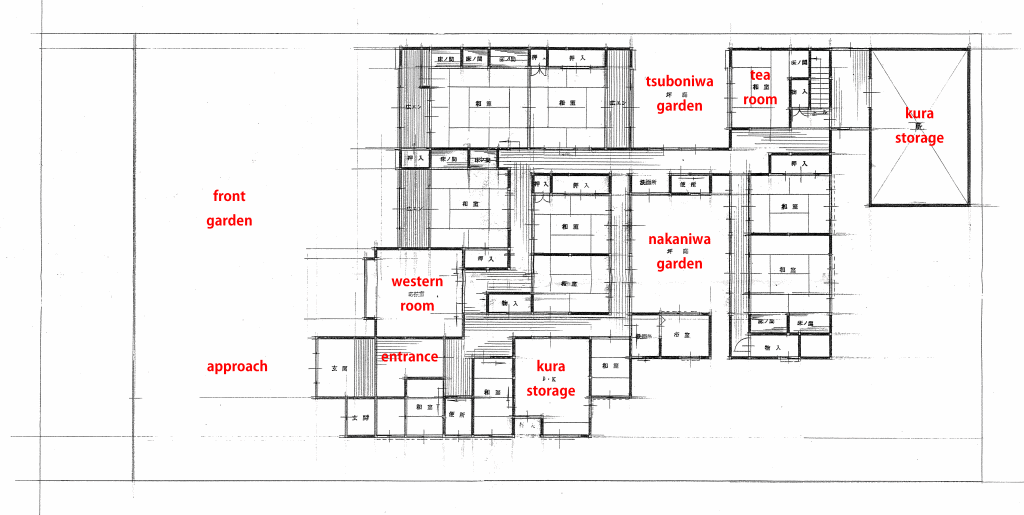
I am not being nostalgic: it is an evaluation based on the virtue of the design elements: knowledgeable but with a scent of fantasy.
If you look at the photos below (↓) you will agree that the sukiya-zukuri style in the Taisho and early Showa period is probably the highest point reached by Japanese architecture. The materials are selected with respect for their features. There is wit and irony. Nature mingles with architecture and even penetrates it as branches become railings and full moons become windows.

But this house is also very practical and built with dedication for the highest quality in the manufacture. There is a You-ma (western style room) with a flavor of art deco. The inlay wood floors, stained glass windows, molded ceiling and concealed sliding doors are as fresh as when the owner`s grandfather was entertaining guests here.
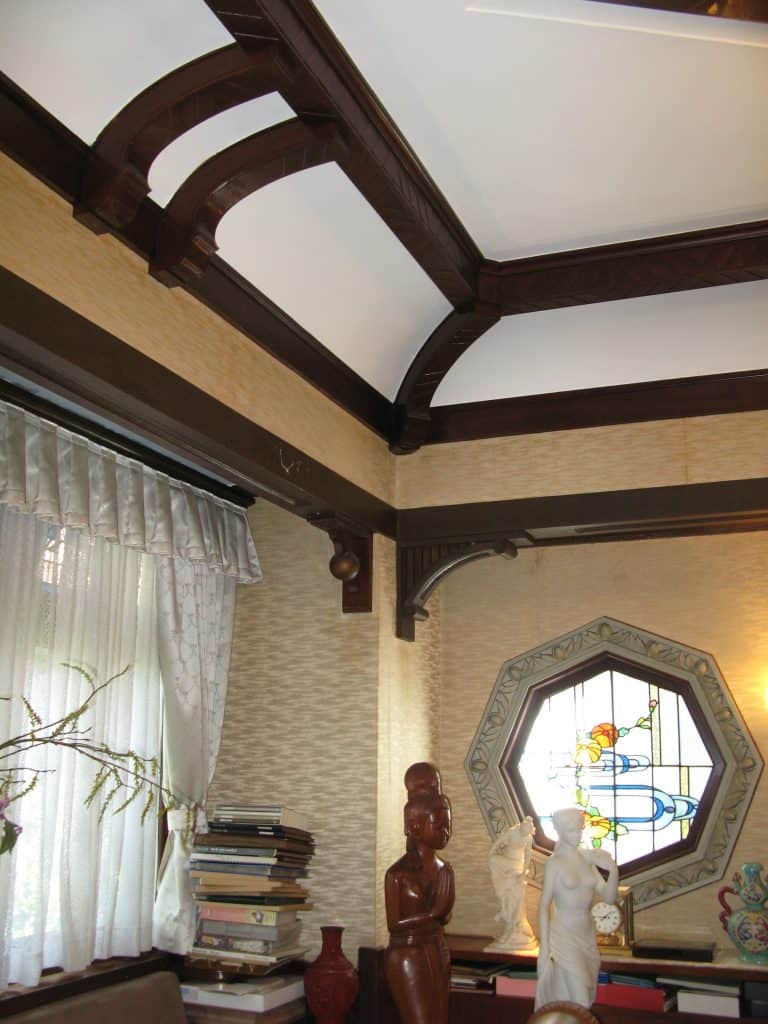

There is a front garden, a back garden and 2 inner gardens so you can be feel the reassuring presence of nature everywhere you are. Can you imagine the full 5-sensorial experience of enjoying a cup of freshly brewed tea while sitting on an agari-ishi among the chirping of birds in a crisp october afternoon?
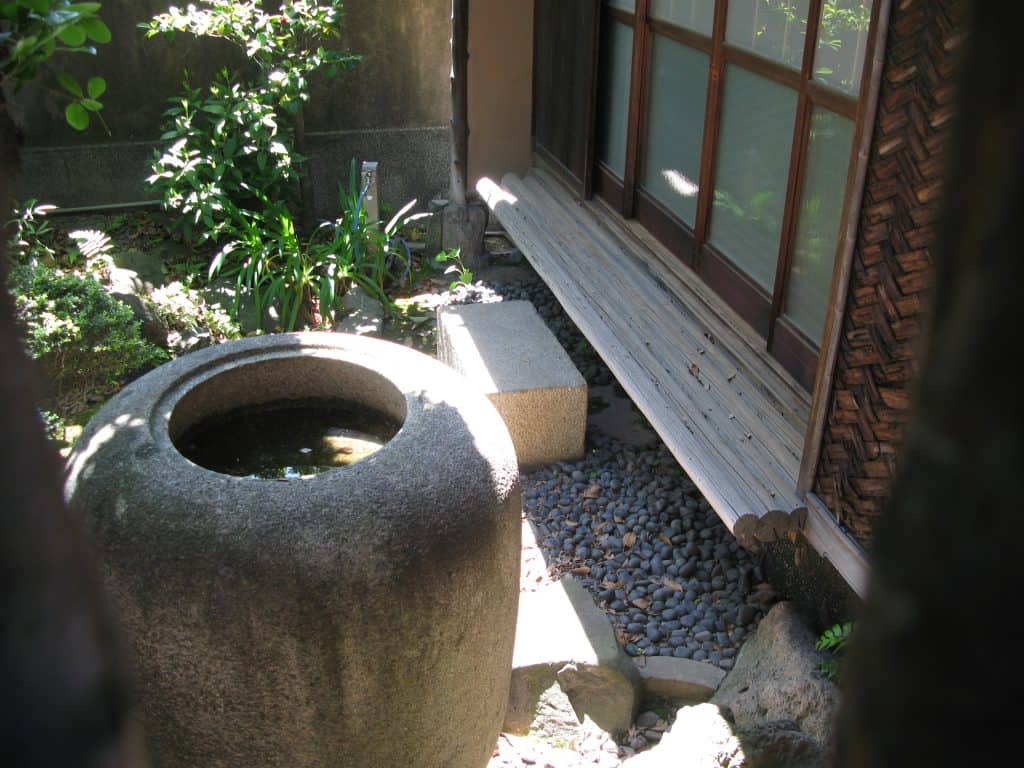
Of course there is a tea room, very comfortable with its not so low nijiri-guchi entrance and thousands of dollars worth “ro” brazier. The naturalistic ceiling and shoji makes you feel in the forest even when you are comfortably sit on the hand woven tatamis.
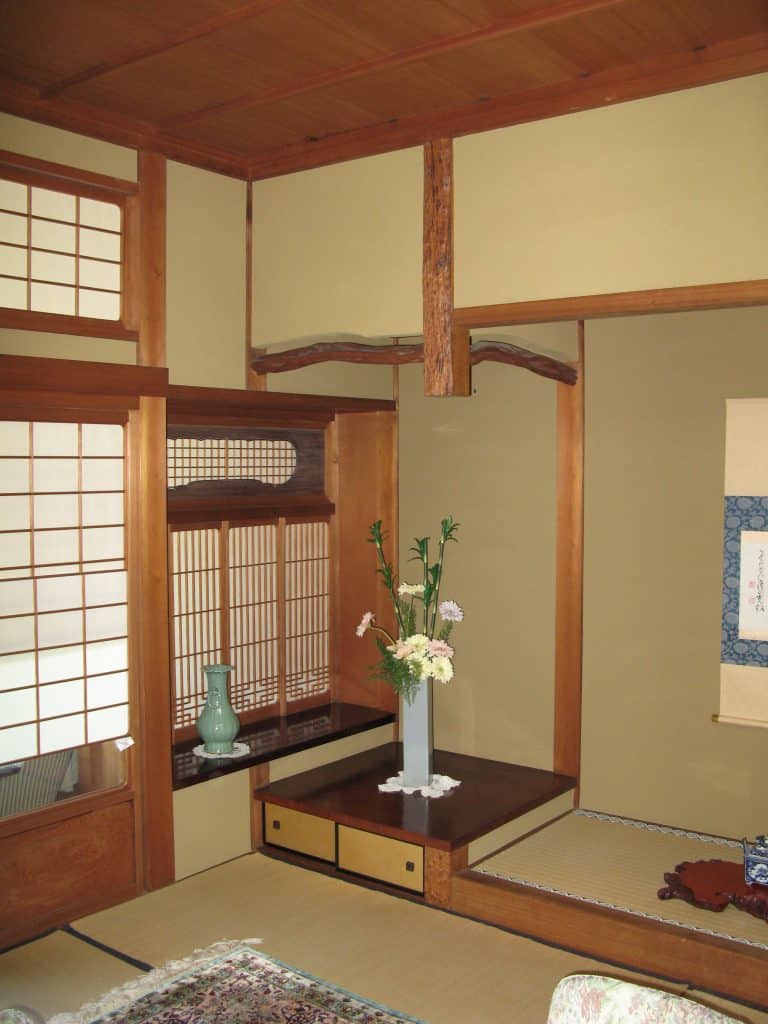
The Kura storage is usually a detached building with thick walls and refractory foundations to protect the family treasures from a possible fire.
In this case, for convenience the Kura is attached to the house so it is not necessary to go outside. The door is of the same quality of a safe, maybe if not heavier and thicker. Nonetheless, it moves without a sound on the big hinges and the dovetail of the doors profile matches like two pieces of a jigsaw puzzle.
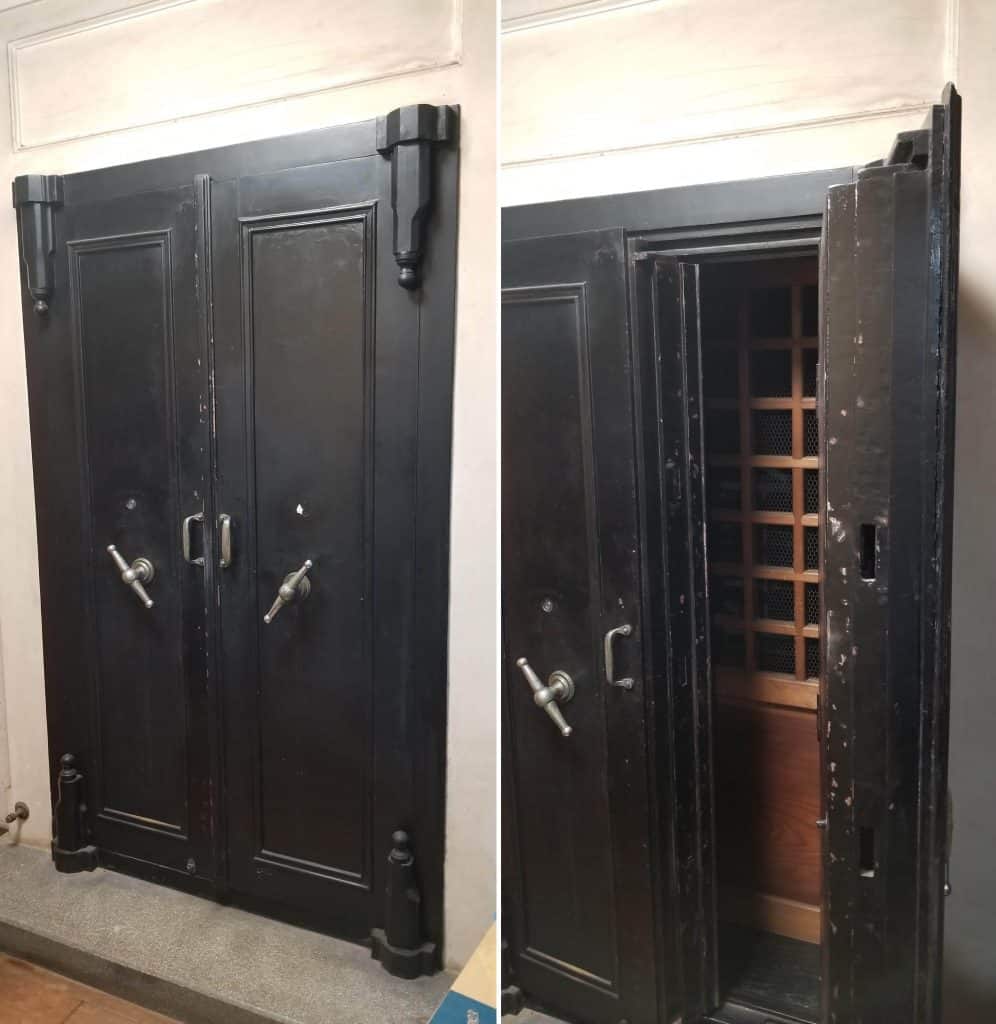
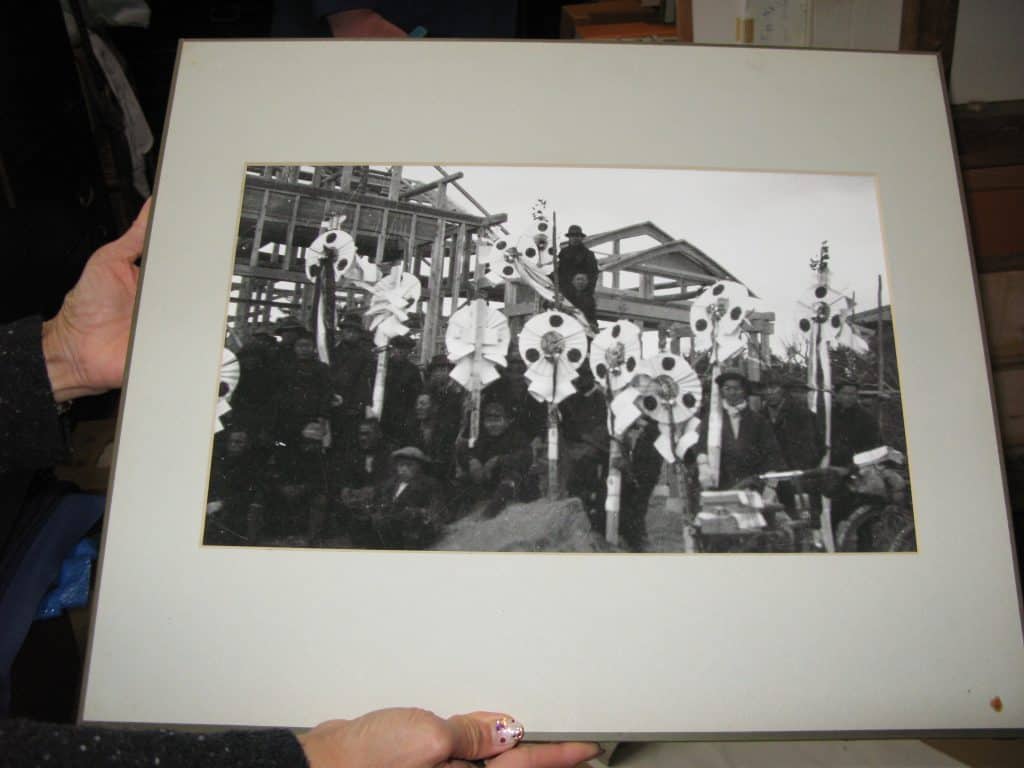
This house was registered 4 years ago as a “Tangible cultural property”.
Here is some background. Japanese legislators in 1950 created a set of rules to protect “Important cultural assets”. The rules are very strict and were aiming at mummifying the buildings, removing their functionality. While applicable to public and religious buildings it was a calamity for the private owners who, put in front of the choice of losing control of the asset
in most cases decided hastily to demolish the ancestral residence before the filing procedures were completed. After 46 years, Japanese legislators, finally understood that the rigidity in the protective measure was creating the opposite effect of obliterating one by one the architectural treasures and in 1996 they created the possibility of filing buildings as usable. A
“Tangible cultural property” must be protected in their integrity but it is possible to upgrade the toilet, or to use a part as a cafe or guest house.
The status of cultural property of course disables a speculative redevelopment of the real estate but offers tax breaks.
It is not a great help for owners but at least is not a further burden and
enlightened heirs are deciding to give it a chance and try to make the house blossom again.
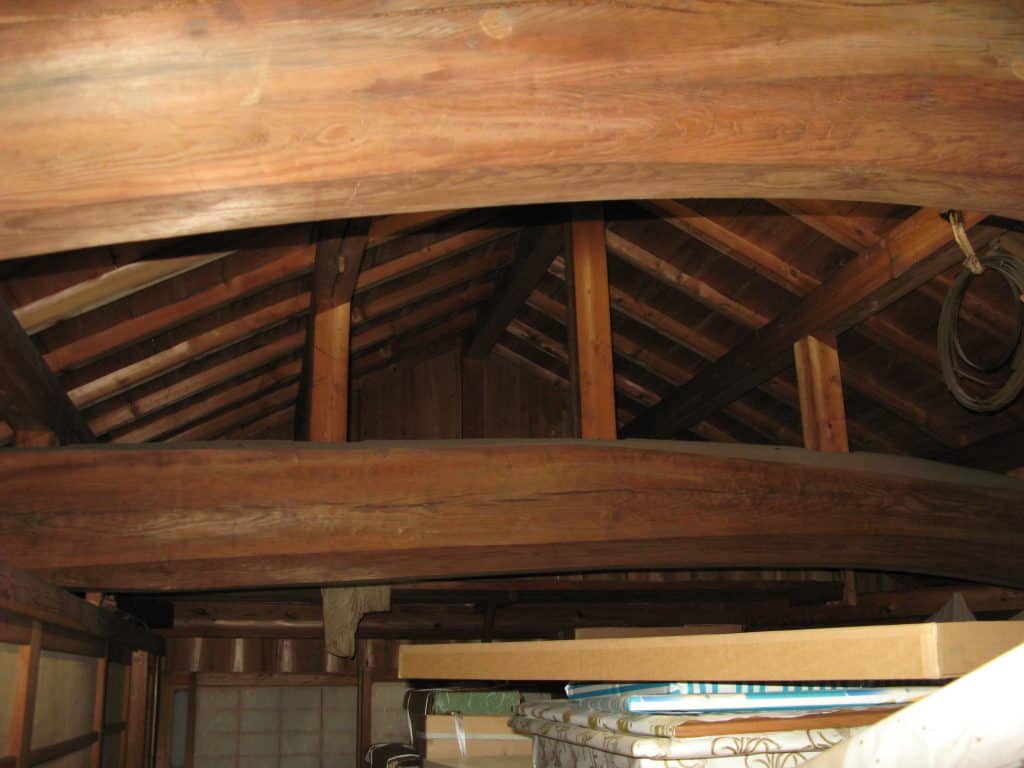
In this case, K-house is in pristine conditions and does not really need repairs or reinforcing. But the owner (and we are on the same wavelength) does not want to create a museum here. He is looking for ideas to share with the world (and especially foreign tourists) the refined sensibility of traditional japanese architecture and crafts.
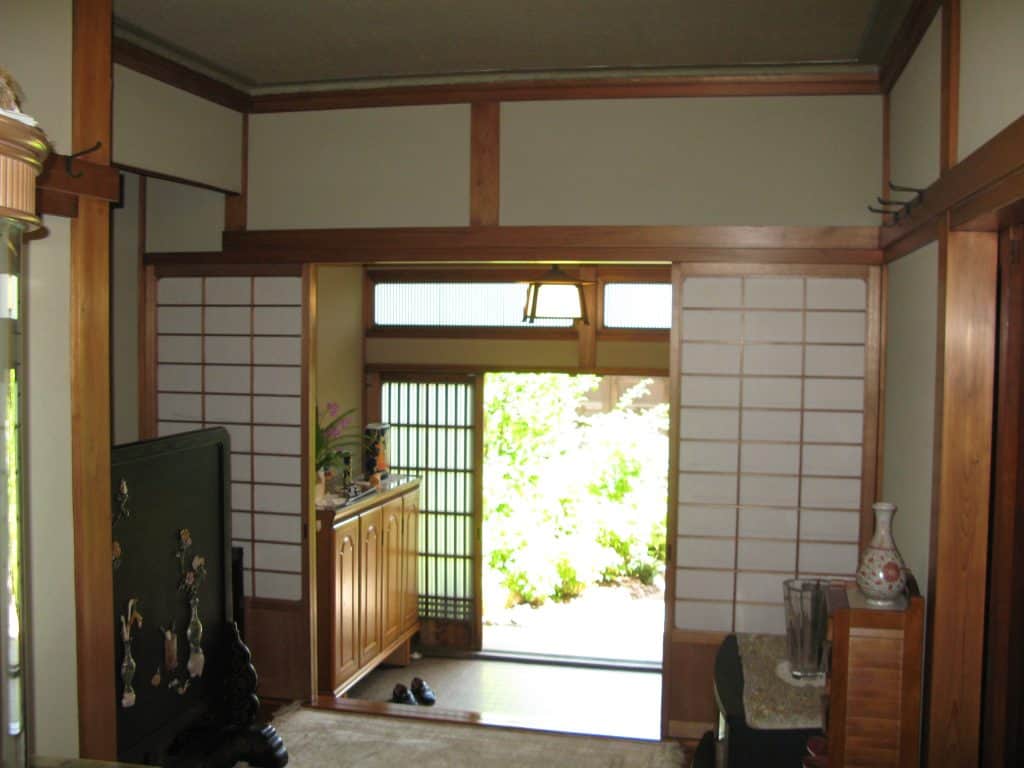
Here is where you and your ideas enter into the game. I would love to hear your opinions, comments, ideas of how to make this project shine and possibly use this energy to create a broader movement and a new culture about traditional japan and tourism.

Here are some ideas we are working on:
- EXPERIENCE TOURISM: offer the possibility to do “experiences” in the house. For instance, join a culinary class and then eat all together. Experience a tea ceremony, a calligraphy class, a koto harp, gardening lesson etc.
- ART SPACE: use the rooms to exibit art, maybe even contemporary art and perform concerts.
- ESCAPE GAME: create puzzles based on this fascinating and authentic theme for an Indiana Jones like adventure (understand the traditional patterns, materials, techniques through a game)
- VIP TOURISM: with some concepts borrowed from Relais & Châteaux, make available the house for small groups upon reservation. This program could be connected with an express service to visit exclusive locations in the Kansai Area with an helicopter.
- SHUTTER CHANCE(S): we could have access to 2000 kimonos contemporary of the house. Each one is hand made by famous artists and used to belong to geisha or high society women. We could make it possible to wear the kimonos and experience a tea (or an espresso!) while being with the body and spirit back in prewar Japan. Also the fusuma doors may be swapped with more colorful and artistic doors according to the seasons and provide for great instagram situations.
- OTHER IDEAS =?????
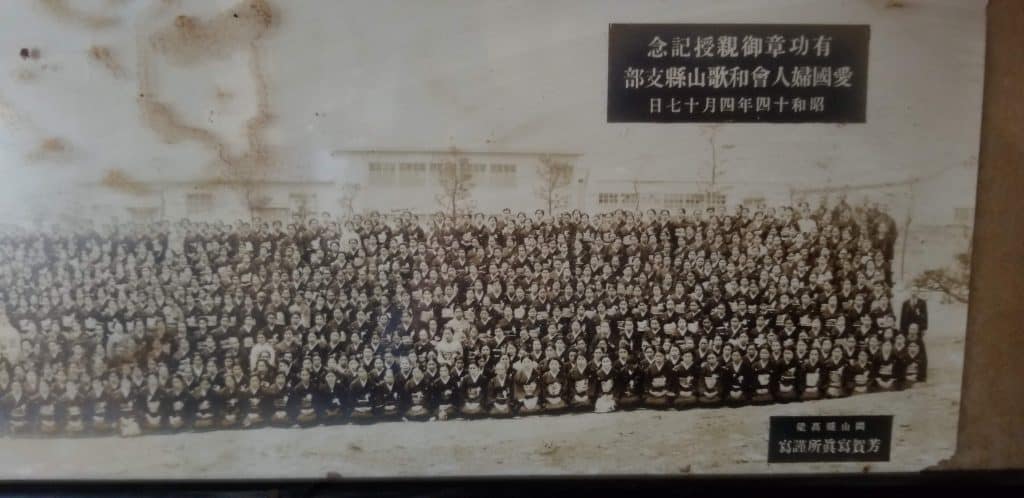
Keep in mind our 2 restrictions:
A) management: the owner does not want to be involved in the management of an Air BNB. Therefore unless you have a very convincing reason, we are not considering overnight stay.
B) regulations: given that the building was built before the Construction standard code, it is impossible in practice to change the destination of use (say to ryokan or to restaurant), anyway some commercial activities may be allowed for areas below 50㎡.
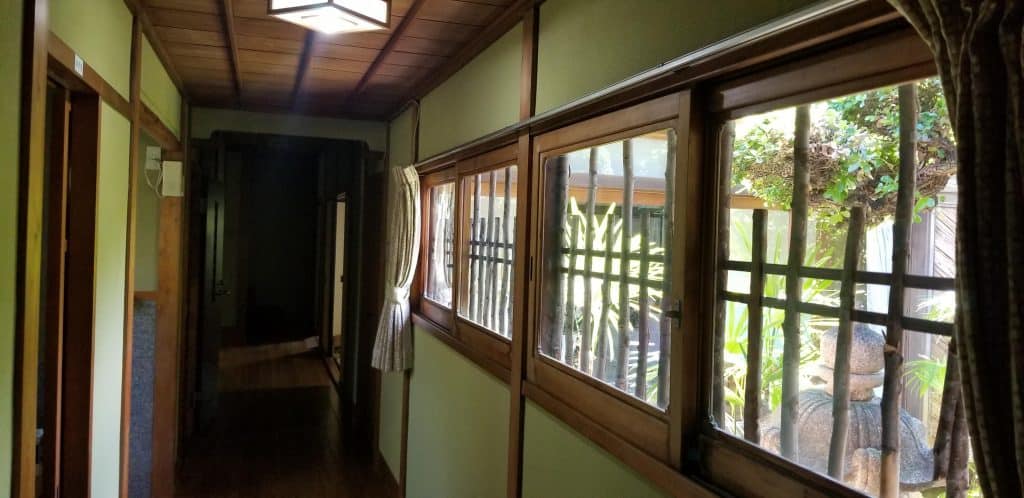
This is all for the moment, just to bring on bring you up to par. And here starts the challenge: I have to submit a concrete plan. And I need your ideas and comments!
The next operative meeting will be on 5/23 (thu) so any hint, example, word of encouragement etc. is very welcome!
Thank you in advance for your splendid support as usual m(_ _)m

Bartok design
2019年5月15日 at 10:23 PMI just love this post. The house is incredible and I cannot wait to see what becomes of it. I love all of the ideas suggested. Might there be a PRIZE for people who make suggestions?
hinoki
2019年5月16日 at 12:22 AMyou are right! I will think of something and will post it later.
How about some essential oil to relax and enable our friends to further sharpen their thoughts?
(strategic present…)
Bartok design
2019年5月17日 at 10:19 AMNice! That will help for sure!
John Robert Lawson
2019年5月17日 at 9:18 AMA few years ago I was able to visit your country. I was impressed with the people and how clean it was. I also fell in love with the house designs. I am building a new house and hope to incorporate a Japanese influence into the design. Any thoughts?
John Lawson
Seattle, WA
Bartok design
2019年5月17日 at 10:18 AMThanks for commenting John. Our first thought is a Japanese bathroom of course! But also the addition of paper shoji doors is an elegant touch as well as tatami reed flooring. Modern Japanese homes often have just one room decorated in this style and it’s lovely. You can’t go wrong with wood either. We’re able to custom-build these items and ship globally so if it goes ahead in a Japanese style please email us.
Thais
2019年5月18日 at 10:29 AMHi, John.
I recently constructed a Japanese inspired dwelling in Hawaii. A few things to consider are: localm building codes which may limit how authentically Japanese you can get… l
eg. joinery without metal fasteners or earthquake strapping;
tata I and shoji out of Taiwan via Amazon for that one tatami room with possible tokanoma;
a genkan is so practical for depositing your boots, our “slippahs” or flip-flops;
an all-wood building is gorgeous but, high maintenance! The “treated” lumber only lasts a few years in our extreme climate with high solarization, rain (Big Island, Hilo side) and annual termite swarms. We need to repaintstain constantly. It’s like painting the Golden Gate Bridge… once you finish, it’s time to start doing it again!;
adding a round window is a nice architectural touch;
off-white walls and lentils over the doors and window that extend a few inches beyond the post framing is nice interior touch.
Let me know if any of these ideas appeal to you!
I have lots more!
Thais
Jona Blocker
2019年5月17日 at 10:28 AMI would be interested in the kimono and obi
Tabitabiya
2019年5月17日 at 12:04 PMThis house is just gorgeous and I am soooo thrilled that you are blessed with this oportunity !!!! If I try to remember the days prior to actually living in Japan myself, I would have loved this house to be a space dedicated to EXPERIENCE TOURISM , a space full of life and possibilities to learn, discover, experience first hand and interact with others with a good deal of laughter…I would also see a room devoted to art exhibitions…Of course a cafe space is also much needed ! As a visitor I would also love very much to know what it takes to build and maintain such a house, I would love to be educated about the secrets of Japanese architecture,marquetry but, i agree, not in the museum type way…I have no ideas to suggest for now…Just, given the restrictions, that might not be possible, but a place to stay for one or two foreign students on a low budget but who come to Japan to learn about art or craft? Anyway, I can’t wait to see hat the future of this house will be !!! How exciting !!!!
Nate Taylor
2019年5月17日 at 1:23 PMI would consider a day spa/onsen. No hot springs? I would look at solar system to heat the hot water. The rooms could be used for massage, meditation, tea and small snacks. I have been thinking of doing something like this in the states. We sure need it. I would teach people that want to work less, how to relax more and how to focus on life and experiences instead of money and stuff.
Thais
2019年5月18日 at 9:55 AMNice idea, Nate. Spa should be available and affordable for small, nuclear families, as well… not just affluent travelers and high rollers.
Leonie clark
2019年5月17日 at 6:25 PMAn arts and crafts space for demonstration of dying arts and or classes. This will keep crafts alive and hopefully expand the number of practitioners.
Leia Bowers
2019年5月18日 at 6:14 AMI love all your ideas and would love to experience share a day in nature with a class on the local flora, perhaps flower arranging in one of the gardens, an extended onsen, kimono viewing, and tea ceremony.
☺️I want it all.
Yonah
2019年5月20日 at 4:30 PMWhat about something to with geisha/geiko/gigi? Kinda like a ochaya? Where geisha can come and entertain tourists? Just a idea
Helen Øvregaard
2019年5月23日 at 9:21 PMWhat a beautiful house, and a fantastic opportunity! I like the idea of experience tourism, combining your first and last suggestion. Of course a ryokan would have been the most tempting idea, this is experience tourism at it’s best(!), but given the restrictions I guess that is out of the question. There are a lot of tourists today (including myself!) that do not only want to be a spectator when visiting another culture, but rather participate in something that goes deeper, being a part of it for a short while. Authentic experiences like choosing a beautiful kimono, learning how to put it together, tie the obi and finding the accessories, wearing it for a traditional tea ceremony, walking in the garden…this is the kind of activities that leaves you with respect of the culture you are visiting. Cooking classes would also be great, and I would for sure like a workshop in japanese gardening! Good luck! I hope this project can make the decision makers realize what a treasure they are destroying, tearing down the old houses that are so unique.